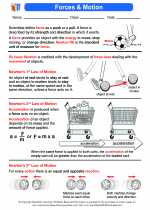Factors Affecting Moldability
Several factors can affect the moldability of a material:
- Temperature: Some materials become more moldable when heated, while others may lose their shape at high temperatures.
- Viscosity: Materials with high viscosity are less moldable, while those with lower viscosity are more easily shaped.
- Elasticity: Elastic materials are more moldable as they can return to their original shape after being deformed.
- Plasticity: Materials with high plasticity can be easily molded into different shapes without breaking.
- Strength: Materials with high strength are less moldable, as they resist deformation.
Examples of Moldable Materials
Various materials exhibit moldability to different extents:
- Clay: A common example of a moldable material, clay can be shaped into various forms and retains its shape when dried or fired.
- Plastics: Many types of plastics can be molded into different shapes using techniques such as injection molding and extrusion.
- Metal Alloys: Some metal alloys, such as aluminum and steel, can be molded at high temperatures to form intricate shapes.
- Rubber: Rubber materials can be molded into different forms to create products such as tires, gaskets, and seals.
Applications of Moldability
The concept of moldability is utilized in numerous industries and applications:
- Manufacturing: Moldability is crucial in the production of various products, including automotive components, consumer goods, and electronic devices.
- Construction: Materials such as concrete and plaster rely on moldability to form structural elements and decorative features.
- Prototyping: Engineers and designers use moldable materials to create prototypes and test new product designs before full-scale production.
- Art and Crafts: Artists and artisans use moldable materials like clay, wax, and polymers to create sculptures, pottery, and other artistic creations.
Study Guide for Moldability
When studying moldability, consider the following key points:
- Definition of Moldability: Understand the concept of moldability and how it relates to the properties of materials.
- Factors Affecting Moldability: Familiarize yourself with the factors that can influence the moldability of different materials.
- Examples of Moldable Materials: Identify various materials that exhibit moldability and their applications in different industries.
- Importance of Moldability: Explore the significance of moldability in manufacturing, construction, and other fields.
- Practical Applications: Study real-world examples of how moldability is utilized in the production of everyday products and in creative endeavors.







